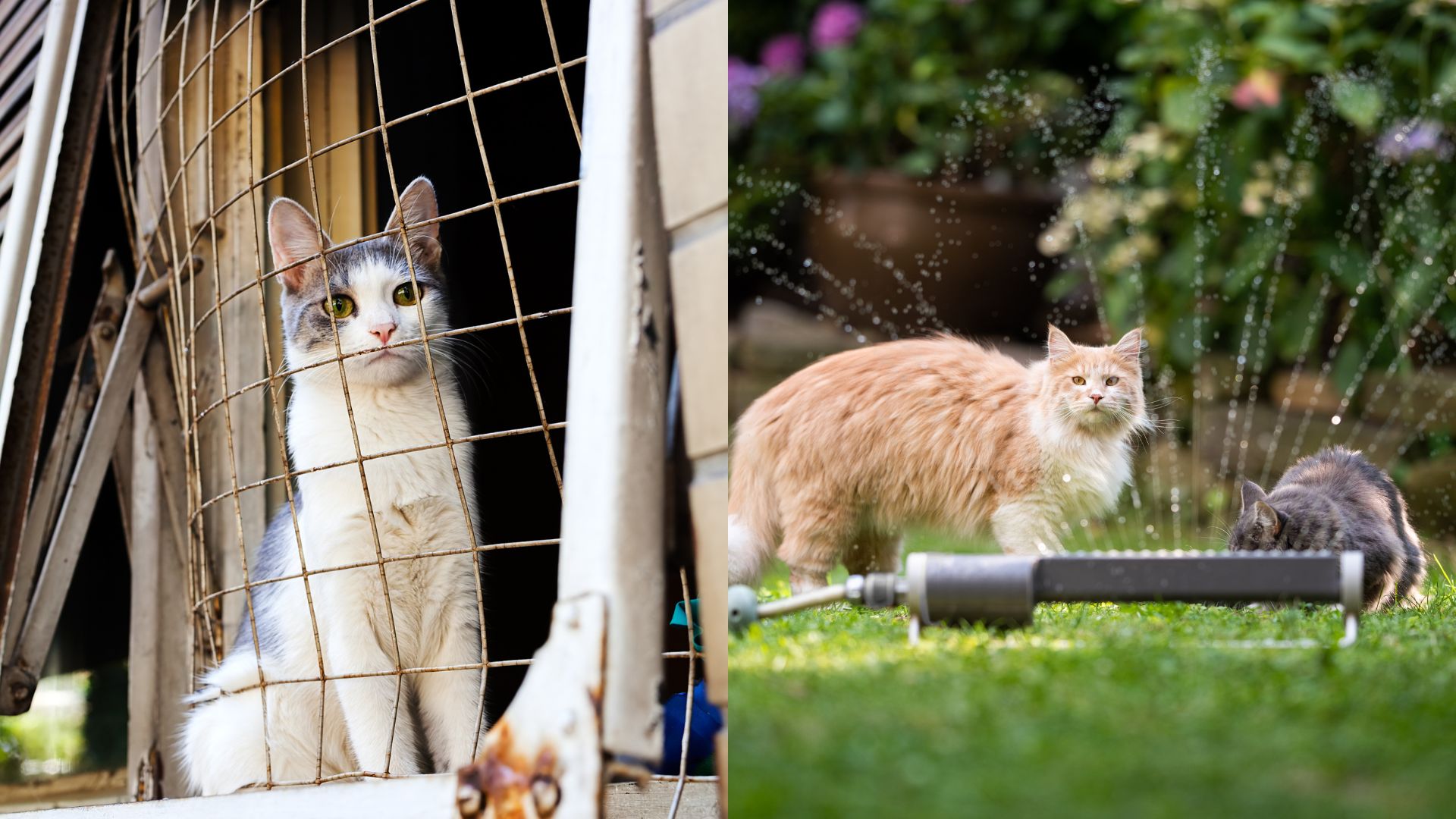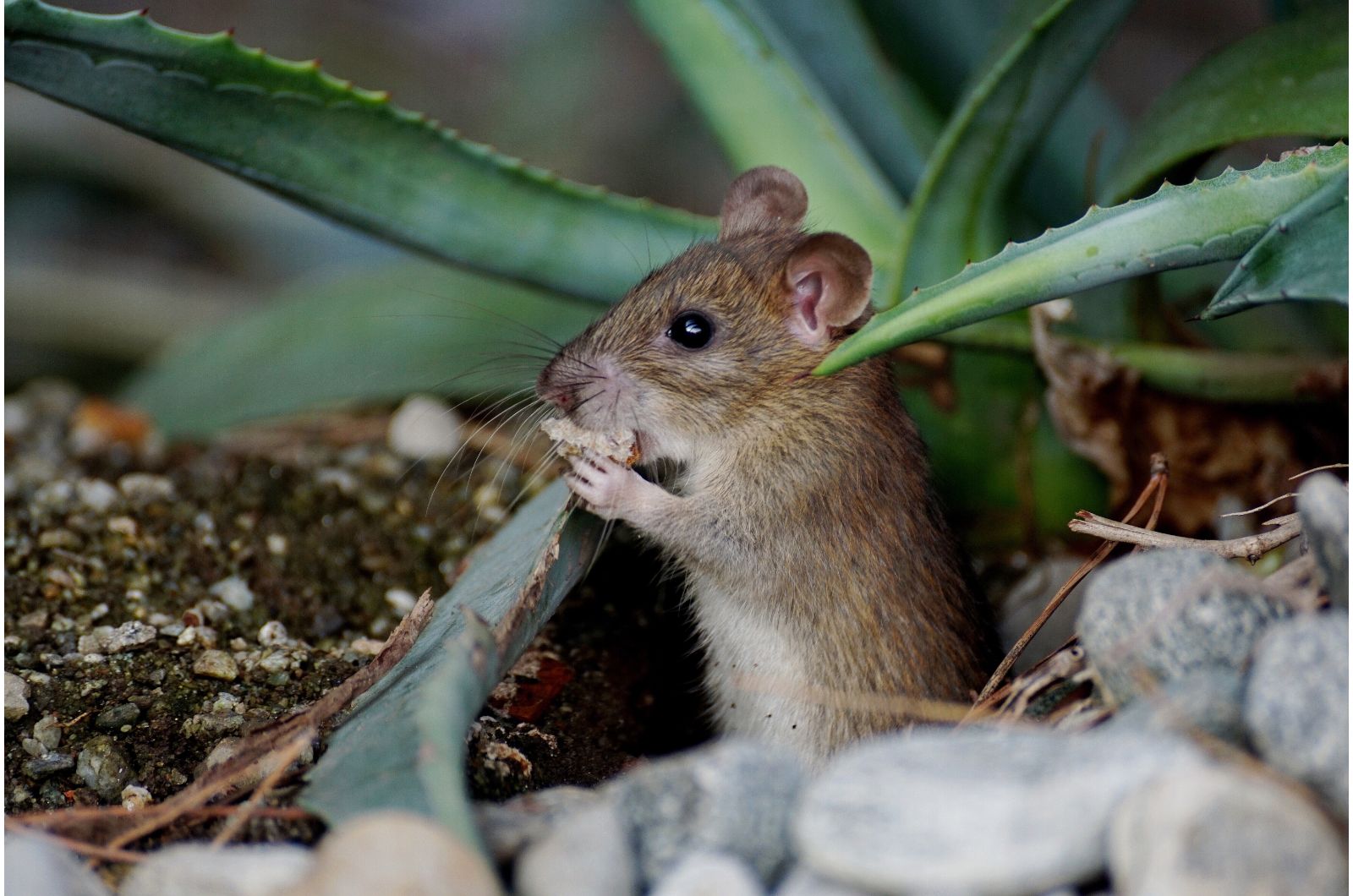Our furry friends look adorable, and we enjoy watching their tiny paws inside and outside our homes.
However, cats are curious creatures, and I’m sure a lot of you will agree if I say that the most curious ones are those that belong to our neighbors.
Felines, just like all other small animals, can wreak havoc in our yards, and it’s not really a good idea to constantly remind your neighbors that their cute kitty keeps smuggling into your yard (don’t ask how I know).
Luckily, keeping cats out of your yard is easy, and with a few of the cost-effective methods I’ll show you below, you can have a cat-free garden in no time!
Let’s get started!
Eliminate Things Cats Like
Where to start? The best would be to use the good old method of changing your perspective. Imagine you’re a cat and think about what would attract you. You already know that they like mice and other small animals, so start from there.
1. Repel Mice, Birds, And Other Small Animals
Cats are skillful hunters and will keep coming to your yard as long as they have something to feed on.
It’s important to realize what attracts birds, mice, and other animals. If you have a trash bin outdoors, always seal it because food waste attracts different wildlife.
Everyone enjoys feeding birdies but if you want to repel cats, you need to repel birds, which means you should remove bird feeders.
Any snack you leave outdoors will be a perfect treat for mice, so you should stop feeding your pets outdoors. Alternatively, clean the bowl as soon as your pets finish eating.
Remove crumbs and other leftovers around the bowl and get rid of standing water in any area of your yard.
If you love spending Sundays grilling and chilling with your friends, make sure to clean the barbecue thoroughly.
Finally, cats like some plants, such as catnip, so you might want to remove it from your yard.
2. Install Physical Barriers
If removing bird feeders isn’t something you would ever do, then consider installing physical barriers.
Many homeowners with this problem use coyote rollers, which are basically long spinning tubes. Whenever a cat tries to climb your fence, the rollers will stop it.
Of course, make sure cats can’t dig under the fence because I’m sure they’ll try it.
3. Install Digging Deterrents
Your neighbor’s cats may have their own self-cleaning litter but the chances they’ll use your yard as their poop patch are pretty high.
As you may know, cat poop contains harmful parasites (1) and pathogens, which isn’t something we would like on our fruit and veggie patches.
If you want to protect your crops, there are a few things you can do. First, consider placing chicken wire over the soil (between plants) and adding a layer of mulch on the top.
The second method is growing ground cover plants, such as sedum. These will protect the soil, making it hard to access.
You can also put pine cones on the ground to make it more uncomfortable for cat paws. A similar effect would be achieved if you sprinkled gravel or small stones on the ground.
Consider purchasing scat mats; don’t worry, they won’t harm the cats.
Consider Cat Repellents
When researching cat repellents, you’ll notice that there are numerous options to choose from. However, there is little to no scientific evidence proving their effectiveness so I guess we should trust users that claim these methods work.
In my opinion, you should try them; the essential thing to remember is that these products won’t harm cats. It’s always better to see them for yourself!
1. Motion-activated Devices
One of the most popular cat repellents is motion-activated sprinklers. They also go under the names critter blasters or scarecrow sprinkles; I guess these names sound way more dangerous than the product itself.
Whenever a cat approaches your yard, the motion will activate sprinklers and in that way repel unwanted guests.
However, the main issue is that any visitor can get soaked when they enter your yard. If you ordered lunch or are expecting guests, turn off the sprinklers.
There are two other disadvantages of this method. First, you’ll need to install more than one sprinkler if you own a large yard. Second, you should change sprinkler locations frequently because cats are very smart and will soon figure out what you’re trying to do.
2. Ultrasonic Devices
Sprinklers aren’t a good option for homeowners who live in regions with long winters. In this case, consider using ultrasonic devices that will emit sounds cats hate.
These devices are also motion-activated and according to research (2), they have a moderate effect.
I recommend combining this method with others from this list for a better effect.
3. Predator Urine
You’ll often hear about using predator urine as a repellent. The most popular ones are coyote and fox urine. I’ve never tried this method primarily due to costs and lack of evidence on its efficiency. I prefer experimenting with cheaper options.
Two things should be considered if you decide on this method, excluding the costs. First, you should always check if the urine is ethically sourced, and second, bear in mind that you’ll need to reapply it if it rains.
4. Use Citrus
Both cats and dogs aren’t really fans of citrus peels, which is why many yard owners decide to use them.
This method does work, but it’s not a long-term solution. The citrus scent will quickly weaken so you need to constantly replace the peels.
If you have a large yard, imagine how many orange peels you’ll need to cover it and repeat the process constantly.
I have to mention that the same applies to other frequently used repellants, such as coffee grounds and cayenne pepper.
You can make a spray by adding a few drops of lemon juice to one cup of water and spraying it over your yard or plants you want to protect. This is actually a common pest control technique but pay attention to dosage since too much citrus juice can harm your plants.
5. Scented Plants
This is another method that lacks evidence, so you rely on what other users tell you. From my experience, some plants, such as oregano and rosemary, do repel cats because of their strong scent.
Apart from these herbs, you can grow a Scaredy cat plant scientifically known as Coleus caninus. This plant has a really strong scent and will repel unwanted guests. The only thing you should check is if you can stand its smell. Yes, it’s that powerful!
Methods To Avoid
No matter how much we want to deter cats from our yards, we should never, ever use inhumane methods.
Electric shocks and barbed wires should never be an option, not to mention poisoned food. There are numerous methods you can use to deter cats and even if none of them works, do not harm these animals.
Essential oils are also on the list of things to avoid as cat repellents because they’re toxic. (3) The same applies to chopped onion.
I’ve seen on social media that some users recommend mothballs as cat repellent; please don’t use them since they contain paradichlorobenzene and naphthalene, highly toxic substances.
Remember that plants such as Monsteras are toxic to cats, so if you keep them outdoors, inform your neighbor.
How To Keep Cats From Straying
Now I would like to share a couple of methods for keeping your cats from straying. These curious creatures easily find their way out of the yard, so here’s what you can do to prevent it.
• Install cat-proof fences: One of the ways to repel other cats while keeping your own in the yard is to install coyote rollers on the fence.
• Install catios: These super cute enclosures will help you keep your cat from straying and it can still have a lovely playtime.
• Harness and leash: Help your cats get used to these by employing positive reinforcement. Yummy cat snacks work great for this purpose!
• Add toys and other interesting features: Add as many things your cat loves to your yard as you can. Grow cat-safe plants, add cat grass, and ensure a lot of climbing structures. It may not be as efficient as the previously mentioned methods, but it’ll definitely help.
• Neutering: This is another frequently used method; male cats definitely won’t join the stray cat team!
As you can see, there are many methods you can use to keep cats out of your yard. For best results, I recommend combining two or more methods from the list!
References
1. CDC – Toxoplasmosis – General Information – Frequently Asked Questions (FAQs). (n.d.). https://www.cdc.gov/parasites/toxoplasmosis/gen_info/faqs.html#:~:text=is%20changed%20daily.-,The%20Toxoplasma%20parasite%20does%20not%20become%20infectious%20until%201%20to,with%20soap%20and%20water%20afterwards.
2. Nelson, S. H., Evans, A. D., & Bradbury, R. B. (2006). The efficacy of an ultrasonic cat deterrent. Applied Animal Behaviour Science.
3. Helpline, P. P. (2020). Essential Oils and Cats. Pet Poison Helpline. https://www.petpoisonhelpline.com/blog/essential-oils-cats/
4. Mothballs (Naphthalene and Paradichlorobenzene). (n.d.). http://npic.orst.edu/ingred/ptype/mothball/index.html





